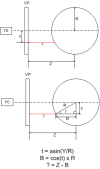Thank you very much!!! You gave me a solution that envolves javascript that is interesting...
ho!, and sorry about my english...
mine is a javascript solution aswell, but it's all squashed into one parameter line. you could expand it to:
<script type="text/javascript">
function checkclear(what){
if(!what._haschanged){
what.value=''
};
what._haschanged=true;
}
</code>
<input type="text" value="Click here to clear text" onfocus="checkclear(this)"/>and then use "checkclear(this)" as the onfocus property for all text inputs that you want to have the same behaviour.

